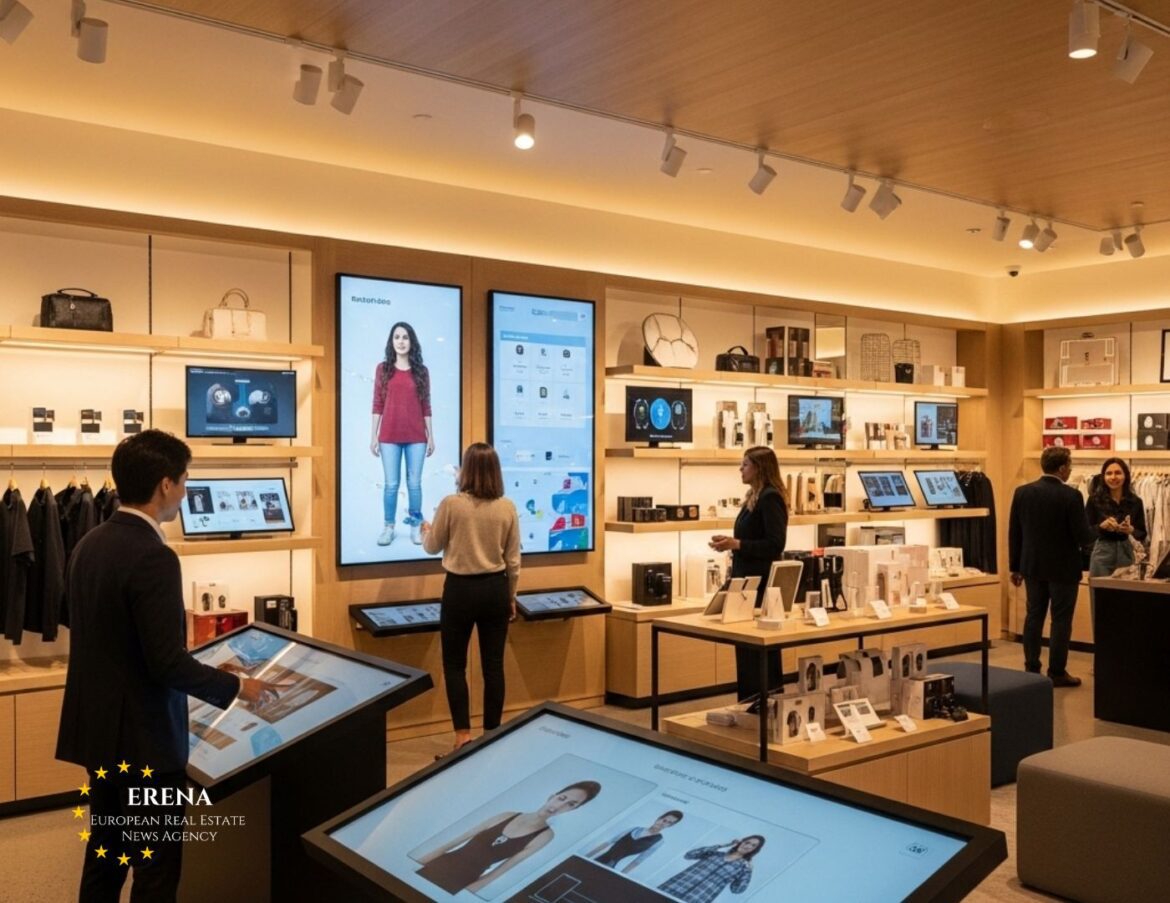Despite the challenges faced by the retail sector in recent years — from the pandemic and explosive growth of e-commerce to inflationary pressures and evolving consumer behavior — global investment firm Barings states: retail isn’t dying, it’s transforming. In its latest report, Barings emphasizes that traditional retail formats have not disappeared but are undergoing a fundamental shift, creating new opportunities for investors, developers, and tenants alike.
A Shift in Paradigm: From Shopping Malls to Experience Hubs
Barings notes that the classic model of shopping centers focused purely on retail is giving way to multifunctional destinations that blend shopping with leisure, wellness, and service offerings. Instead of simply being spaces to buy products, malls are evolving into lifestyle centers that include restaurants, gyms, healthcare services, coworking areas, and entertainment venues.
This transformation increases customer dwell time, boosts engagement, and results in more resilient business models. According to Barings, retail spaces integrated with leisure uses experience 20–30% higher foot traffic and maintain steadier income, even during times of economic uncertainty.
Digital Integration and the Rise of Omnichannel
Barings highlights that winners in retail are not those who have abandoned physical stores for online platforms, but those who successfully merge the two. Brick-and-mortar stores are now key elements in logistics chains — serving as fulfillment points, product return hubs, and showrooms.
Brands like Zara and Nike are leading with “click-and-collect” models, allowing customers to shop online and pick up in-store. This not only reduces delivery costs but increases in-store visits. Barings reports that around 40% of customers who enter a store to collect an online order make additional purchases on-site.
The New Retail Focus: Location, Flexibility, and Sustainability
In today’s retail landscape, three key elements have become essential: strategic location, adaptive formats, and sustainability. Barings is focusing on high-footfall areas in major cities, particularly near transportation hubs and mixed-use residential neighborhoods. Properties that can accommodate diverse tenants — including healthcare providers, gyms, and education centers — are proving to be most resilient.
Sustainability is also a major driver of investment value. Retail properties with energy-efficient systems, green certifications, and modular layouts are outperforming others in both leasing activity and long-term returns. Barings prioritizes assets that meet stringent ESG (environmental, social, governance) criteria.
Investment Strategy: From Risk to Resilience
Barings argues that retail is no longer the high-risk asset class it was perceived to be. On the contrary, well-located, high-quality retail assets with flexible formats and long-term tenants are now in high demand among institutional investors. Open-air retail parks and urban high street retail are especially attractive.
Prime high-street retail assets in cities like London, Berlin, and Paris offer yields between 4.5% and 5.5%, while suburban retail parks in Germany and the UK can reach yields of 6–7%. These formats also show significantly lower vacancy risks compared to traditional malls.
Growth of Alternative Tenants: Medical, Discount, and Service-Oriented Retail
Barings observes a shift in tenant composition toward essential services and discount-oriented retail. Medical labs, clinics, veterinary centers, bakeries, discounters, and fast-fashion brands are demonstrating the highest resilience and consistent customer demand. While many premium brands are closing stores, value-oriented chains are expanding.
Retailers like Action (Netherlands), Pepco (Poland), and KiK (Germany) are aggressively growing across Europe, often taking over former big-box spaces left vacant by legacy retailers. Barings sees these tenants as solid income drivers with low operational costs and high turnover.
Retail’s Role in Urban Development
Barings sees retail not just as a business sector, but as a vital part of the urban fabric. Today’s mixed-use developments incorporate retail at their core, providing essential services that support local communities and reduce car dependency — aligning with the concept of the “15-minute city.”
Convenience retail — such as supermarkets, cafés, pharmacies, salons, and service points — in walkable residential areas is becoming an integral part of sustainable urban planning. Barings supports projects that merge retail into everyday life and enhance overall livability.
New Geographies and Localized Approaches
Rather than applying a one-size-fits-all strategy, Barings focuses on local nuances. In Southern Europe, where pedestrian culture and local shopping habits remain strong, urban high-street retail and covered arcades are particularly valuable. In contrast, Eastern Europe is seeing rapid expansion in suburban retail parks and hybrid shopping complexes.
By adapting to the specific habits, expectations, and digital maturity of each market, Barings can achieve stable returns while minimizing operational risk. Flexibility is key to success in today’s decentralized retail environment.
Price Levels and Returns: The 2025 Snapshot
According to Barings, in 2025 the average price per square meter of high-street retail in major European city centers ranges from €5,000 to €12,000. Retail parks are priced more modestly, between €1,800 and €3,500 per m² depending on the location and country. Average yields for retail investments stand at 5.2% in Western Europe and 6.3% in Eastern Europe.
Core assets with long-term lease agreements (7+ years), low vacancy rates (under 3%), and value-add potential perform best. Barings is targeting properties with rental growth upside and conversion flexibility to drive returns over the medium to long term.
Conclusion
Barings is dismantling the outdated narrative that retail is dead. Instead, the firm shows that the sector is evolving — reshaped by new consumer behaviors, hybrid formats, and digital integration. Retail is still very much alive; it simply looks different than before.
Those who recognize this transformation as an opportunity rather than a threat will be the long-term winners. Barings continues to invest in the sector as a core component of modern cities — one that blends commerce, community, and sustainability.

